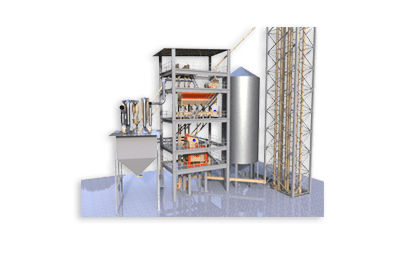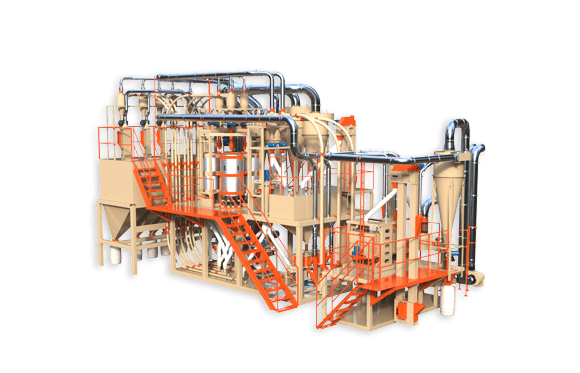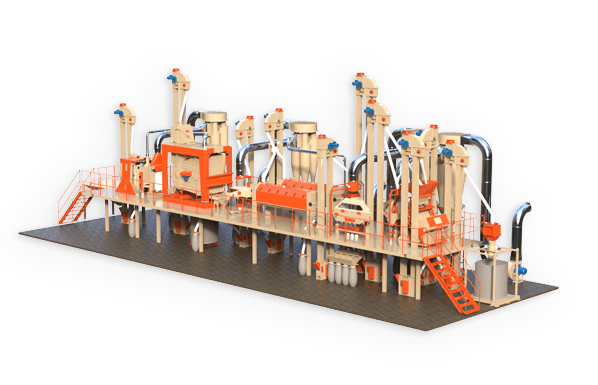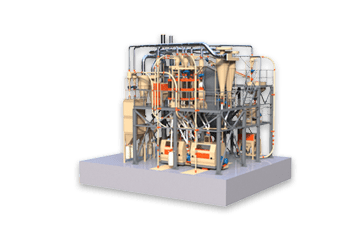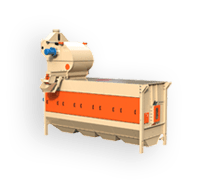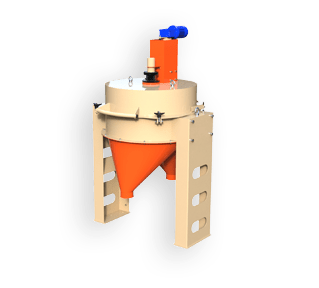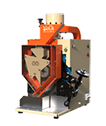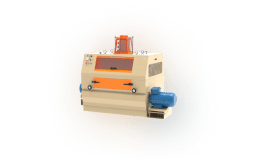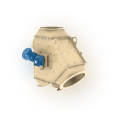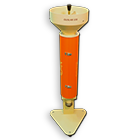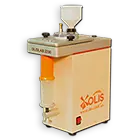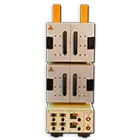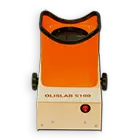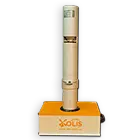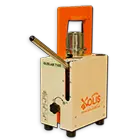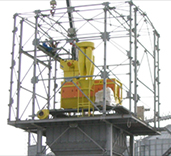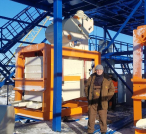From the moment of harvesting until processing into finished products, grain is repeatedly cleaned. This is necessary for removing weeds and grain impurities, as well as for forming batches of grain with the specified properties.
Traditionally, all types of cleaning are divided into the following types:
- preliminary – carried out immediately after harvesting before drying, this removes large impurities, weed seeds, etc.;
- primary – designed to isolate the maximum amount of impurities with minimal losses of the processed product;
- secondary – produced after the primary for the final formation of the grain mass; Mainly used for seed grains, as well as for the selection of difficult-to-separate impurities
Pre-cleaning
Requirements for the technology of pre-cleaning of grain and seeds
Pre-cleaning is carried out to remove large, small and light impurities from the grain obtained immediately after the combine or threshing machines. This is done in order to ensure improved grain preservation, preparation for further processing, namely drying or active aeration, as well as subsequent effective cleaning. The moisture level of the grain heap during pre-cleaning is up to 35%, contamination level is up to 20%.
Freshly harvested grain is divided into three groups:
- – highly humid (up to 45%) and heavily clogged (up to 25%);
- – medium wet (up to 22%) and medium clogged (up to 10%);
- – dry (up to 22%) and slightly clogged (up to 5%).
In the LUCH ZSO separator, preliminary cleaning is carried out, after which the content of impurities should not exceed 3%, including no more than 0.2% of straw impurities. During this process, there are losses of grain from the main crop, which falls into the “impurity” fraction, but these losses should not exceed 0.2%. Also, it is impossible to avoid grain crushing, the permissible proportion of which is up to 0.1%.
In cases where, due to severe contamination or humidity, cleaning the heap in one pass through the separator does not allow the specified requirements to be met, repeated passes through the separator are used or the production line is supplemented with other cleaning machines. In some cases, cleaning requirements may be met at the cost of reduced productivity.
The main purpose of pre-cleaning is to provide more favorable conditions for drying grain. To do this, first of all, they strive to remove stones, branches and clods of earth, which reduce the flowability of grain and prevent its movement in grain dryers. Also, if possible, get rid of weed seeds – in most cases they are characterized by higher moisture content than the main crop.
Preliminary cleaning should be carried out as early as possible; a delay of even 10-12 hours leads to yield losses due to intensified respiration and self-heating. During separation, two fractions are separated:
- grain;
- waste.
In this case, the grain content in the waste should not exceed 0.05 percent of the original mass. At least 50 percent of the waste must be removed from the purified fraction, including almost all straw.
Primary cleaning
Requirements for the technology of primary purification of grain and seeds
After preliminary cleaning to further remove impurities and bring the grain into compliance with the basic conditions, and the seeds with the standards of the first and second class norms, primary cleaning of the grain (seeds) is carried out. It should be noted that difficult-to-separate impurities are removed at the following stages of purification.
Permissible grain moisture content for primary cleaning is up to 18%. The permissible content of impurities when processing grain is up to 10%, when processing seeds – up to 6%.
At this stage, the difference between the useful fraction and waste in linear dimensions and aerodynamic properties is used. The difference in length serves for separation in triremes, in thickness, width and weight in air-grid machines.
Trier is grain cleaning equipment with cellular working bodies in which grains of a certain length are retained. For example, the trier-puppet separator TCK produced by OLIS screens out pupae seeds, which are much shorter in length than those of the main crops. At the same time, oat selectors (for example, TCO) capture shorter grains of rye and wheat and skip long oat seeds.
Air-grid machines use different speeds of soaring of light and heavy fractions in a uniform air flow (the so-called “winnowing”) – this parameter determines at what speed of the air flow the particles become suspended state (“soaring”). Structurally, the units consist of a grate on which the grain mixture is placed, and a fan that supplies an air flow of a given intensity. The result is lighter straw, chaff, puny grain, etc. easy to remove.
During primary purification, four fractions are separated:
- refined grain;
- feed grain (includes puny and small grains);
- small and large impurities;
- small waste.
Cleaning is considered successful if grain losses do not exceed one and a half percent of the original mass, and the content of impurities in the grain does not exceed three percent.
Secondary cleaning
Secondary purification is carried out after the primary purification to isolate grain for seed purposes, as well as to select difficult-to-separate impurities.
It is carried out in complex air-lattice units, at the output of which four fractions are formed:
- seed grain;
- second-class grain;
- large impurities and aspiration waste;
- small impurities.
The inclusion of seeds in impurities should not be more than one percent, and the inclusion of full grain into second-grade grain should not be more than three percent.
Special cleaning methods
Sometimes standard separation methods do not provide the required degree of purification. In this case, special units are used that take advantage of the differences in the physical properties of the seeds. First of all, these are underdeveloped and sprouted grains of the main crops; seeds affected by mold or smut (visually identified by color – from brown to black); Some weed seeds are close in size to seeds of cultivated plants.
Pneumatic vibration separation is most often used, based on the difference in the density of the endosperm of the seeds. A layer of grain mass on a grid table (for example, on pneumatic sorting tables SPS-1.0 or SPS-3.5) with the help of an air flow, they are transferred to a pseudo-liquid state, as a result of which less dense grains “float” up, and more dense grains sink down.
Another popular separation method is separation based on the difference in the friction force on the surface of complete and inferior seeds, as well as seeds of cultivated plants and weeds. For these purposes, screw and friction slides are used, the slope of which is selected in such a way that the rolling speed of rough and smooth grains is significantly different.
There is also a separation method in electromagnetic units. It is used to separate flax, alfalfa and clover seeds from plantain, cornflower and bittergrass. They are close in linear dimensions and weight, so in conventional separators practically no separation occurs.
Therefore, a small amount of small metal filings are added to the grain mixture, which stick to the hairy weed seeds and practically do not combine with the smooth seeds of cultivated plants. The mixture then falls onto an electromagnetic drum, which attracts magnetized weed grains and dumps them into waste.


